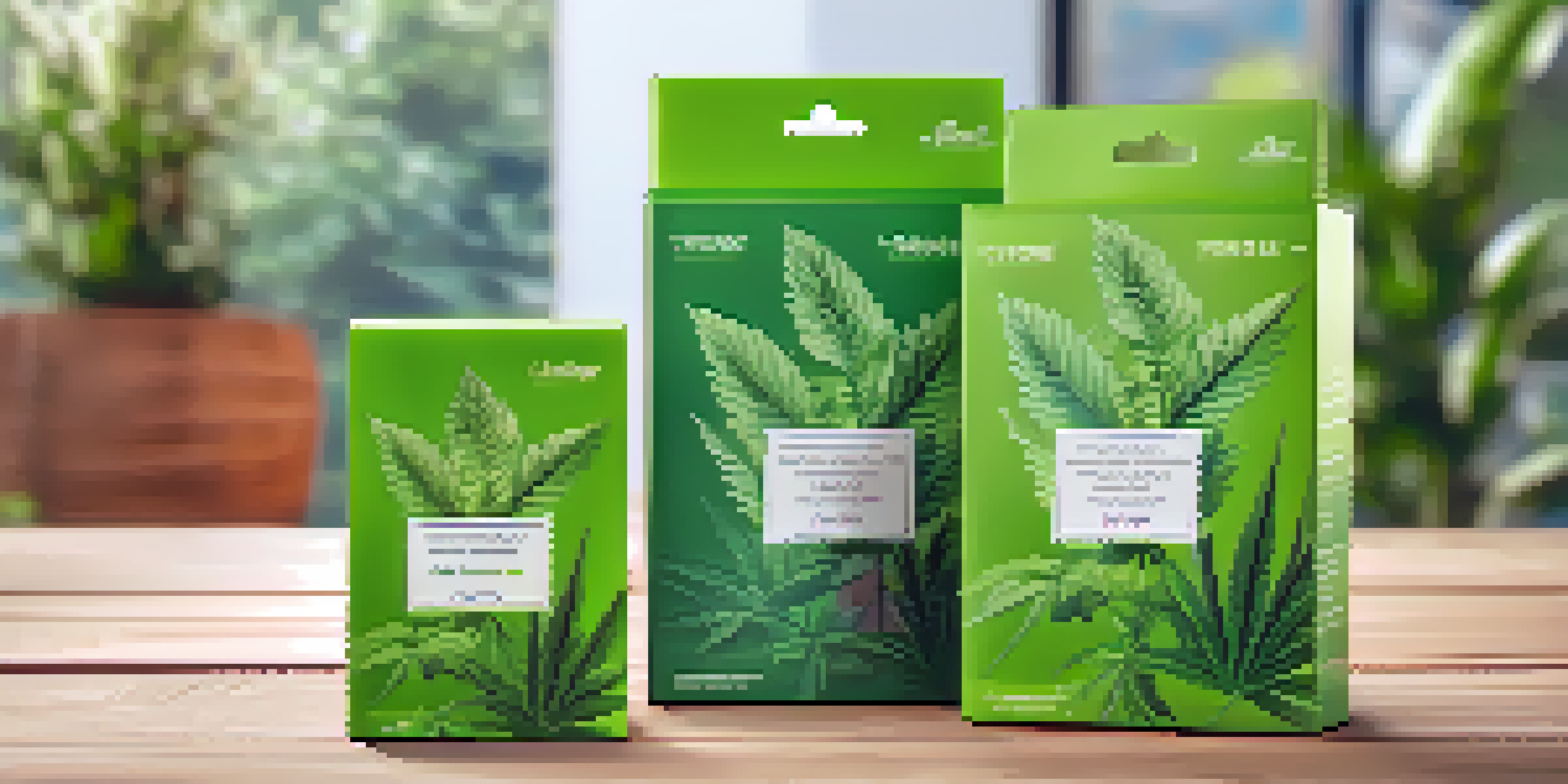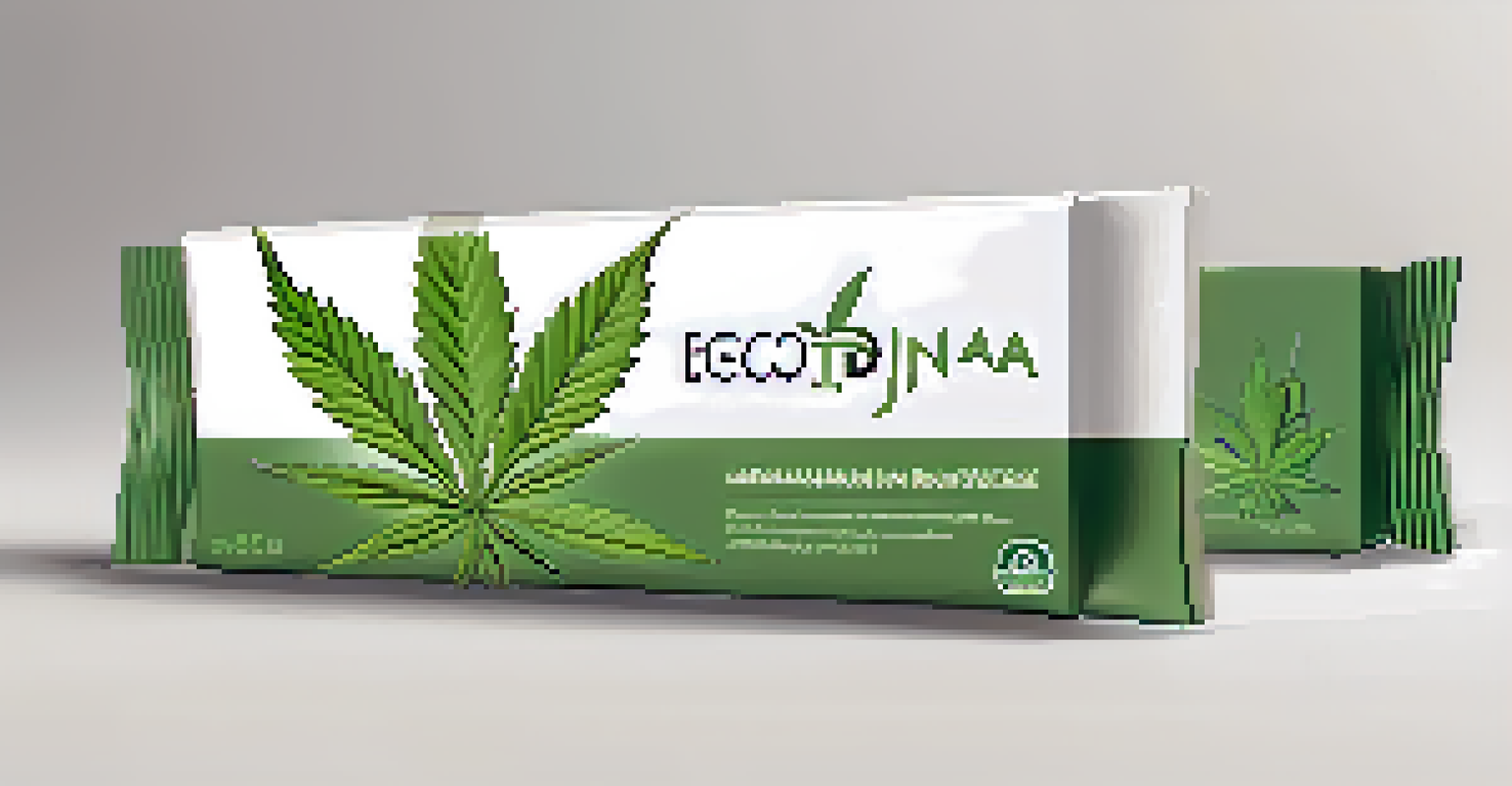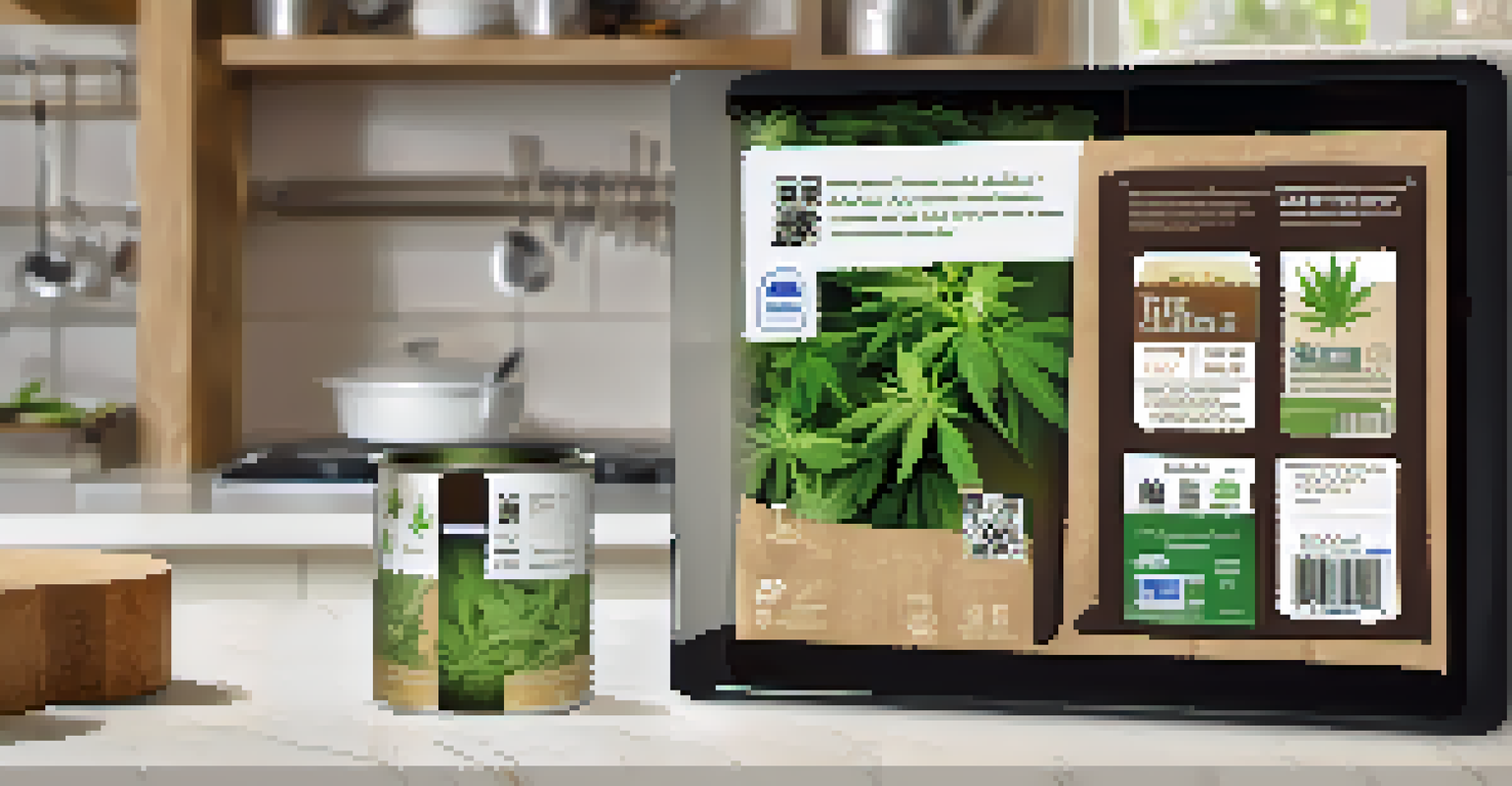Understanding the Role of Packaging in Marijuana Retail

The First Impression: Packaging's Visual Impact
Packaging is often the first point of contact between the product and the consumer. Eye-catching designs can draw customers in, making them more likely to choose one product over another. Think of it like the cover of a book; a visually appealing cover can entice you to pick it up and learn more.
Packaging is the first thing a consumer sees, and it can make or break their decision to purchase a product.
In the competitive marijuana retail market, where many products look similar, distinctive packaging can set a brand apart. Colors, graphics, and typography can convey the essence of the product and resonate with target audiences. For instance, a brand targeting millennials might use bold colors and modern fonts to create an edgy feel.
Additionally, effective packaging not only attracts attention but also communicates essential information about the product. This includes potency, strain type, and usage instructions, which are crucial for informed consumer choices.
Safety and Compliance: Protecting Consumers
In the marijuana industry, safety is paramount. Packaging must not only appeal to consumers but also adhere to strict regulations. Many states require child-resistant packaging to prevent accidental ingestion, especially in households with children.

Moreover, compliant packaging plays a vital role in building trust with customers. When consumers see that a brand prioritizes safety through its packaging, they are more likely to feel confident in their purchase. This sense of security can lead to brand loyalty and repeat business.
Packaging Drives Consumer Choices
Eye-catching packaging not only attracts customers but also communicates crucial product information, influencing their purchasing decisions.
For example, a company that uses tamper-evident seals and clear labeling can reassure consumers about the integrity of their product. This transparency fosters a positive relationship between the brand and its customers.
Brand Identity: Packaging as a Reflection of Values
Packaging is not just about aesthetics; it’s a vital part of a brand’s identity. The materials, colors, and design choices reflect the values of the company. A brand that emphasizes sustainability might use eco-friendly materials, which can resonate with environmentally conscious consumers.
Good packaging can raise the perceived value of a product and create a lasting impression.
This connection to brand values can enhance customer loyalty. When consumers feel aligned with a brand’s mission—like promoting sustainability—they are more likely to support it. It’s like rooting for a sports team; you want to support a team that represents your values.
Moreover, consistent packaging across product lines can strengthen brand recognition. Familiarity with a brand's visual elements can make customers more likely to choose it again in the future.
Consumer Experience: Enhancing Interaction with Packaging
Packaging plays a crucial role in the overall consumer experience. From the unboxing to product usage, the packaging can enhance how a customer feels about their purchase. For example, a well-designed box can create a sense of anticipation and excitement.
Furthermore, functional packaging that facilitates easy opening and storage can significantly improve user satisfaction. Consider how frustrating it can be to open a package that is difficult to access; functional packaging minimizes this hassle.
Safety Boosts Brand Trust
Adhering to safety regulations and using compliant packaging builds consumer confidence, fostering brand loyalty.
Additionally, interactive elements, such as QR codes that provide more information, can enrich the consumer experience. This engagement not only informs but also fosters a deeper connection with the brand.
Trends in Marijuana Packaging: What's Hot Right Now
The marijuana industry is continually evolving, and packaging trends are no exception. Currently, minimalist designs are trending, emphasizing clarity and simplicity. This approach often appeals to consumers looking for straightforward, high-quality products.
Another exciting trend is the use of biodegradable and recyclable materials. As consumers become more environmentally conscious, brands that adopt sustainable practices are likely to gain favor. It’s similar to how many consumers now prefer organic foods; they want products that align with their values.
Moreover, technological advancements are paving the way for innovative packaging solutions. Smart packaging that incorporates technology for tracking product freshness or providing real-time information is gaining traction in the market.
The Economic Impact: Packaging and Sales Performance
Packaging doesn't just influence consumer perception; it can also affect sales performance significantly. Studies show that products with attractive packaging can see a noticeable increase in sales, as consumers are often willing to pay more for aesthetically pleasing designs.
This economic impact is especially relevant in the marijuana industry, where competition is fierce. A unique package can be the deciding factor for consumers who are confronted with multiple options on the shelf. It’s like shopping for snacks; the packaging often influences your choice.
Sustainability Shapes Brand Identity
Using eco-friendly materials in packaging reflects a brand's values, resonating with environmentally conscious consumers and enhancing loyalty.
Moreover, investing in high-quality packaging can lead to better brand positioning in the market. Brands that prioritize packaging can enhance their perceived value, encouraging consumers to choose them over cheaper alternatives.
Future Directions: Evolving Packaging in Marijuana Retail
As the marijuana industry continues to grow, so too will the role of packaging. Future innovations may include more personalized packaging solutions that cater to individual preferences. Imagine a brand that allows customers to design their own packaging; this could create a unique shopping experience.
Additionally, advancements in technology may lead to smarter packaging options that enhance safety and functionality. For example, packaging that changes color to indicate freshness could revolutionize how consumers perceive product quality.

Ultimately, the future of marijuana packaging will likely be shaped by consumer preferences and technological advancements. Brands that stay ahead of these trends will be better positioned to thrive in an ever-evolving market.